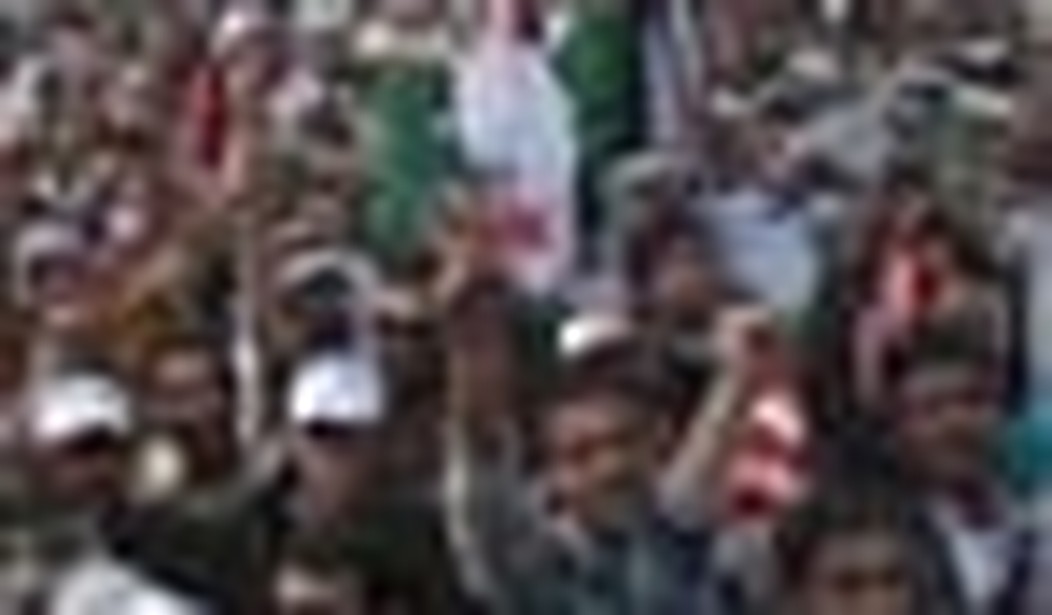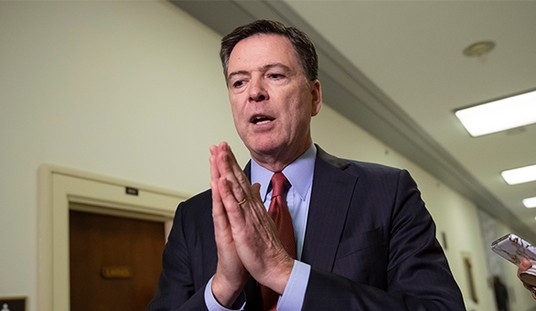Tear gas, rocks, and stun grenades filled the air as Palestinian rioters and Israeli security personnel skirmished today — the Land Day protests unraveled into predictable anarchy and violence.
In Jerusalem, Bethlehem, and at the Erez crossing between Gaza and Israel, hundreds of Palestinian protested, and later rioted, as they marched on Israeli border positions. In an abrupt contrast to the relative silence at the Qalandiya crossing between Ramallah and Jerusalem this morning, the attempt to “liberate” Jerusalem descended into chaos at the conclusion of Friday morning prayers.
Organizers of the Global March on Jerusalem boasted of a complex and thoroughly planned effort to flush Israel’s borders with two million activists, refugees, and militants from across the West Bank, Gaza, Syria, Lebanon, and Jordan for Land Day. (March 30 is when Palestinian and Israeli Arabs commemorate deadly protests that took place in Israel over land rights in 1976.) The organizers included Hamas, the Muslim Brotherhood, and leftist and extremist groups, and were backed by Iran and other Arab governments.
Protestors burned tires and threw Molotov cocktails at Israeli soldiers in Jerusalem, who were deployed to prevent large-scale violence and the possible infiltration of Israeli territory. In the West Bank and Gaza, Israelis responded with non-lethal countermeasures, such as tear gas, the Scream device (used to disperse crowds with projected audible dissonance), and the Skunk (a modified carrier that sprays a non-toxic foul-smelling substance at large crowds). At the Erez Crossing between Israel and Gaza, 14 injuries and one death were reported after Gaza protesters crossed into the no-man’s land close to the Israeli border. The rioters were fired upon after failing to heed warning shots by IDF personnel. Large groups of Palestinians gathered at landmarks in Lebanon and Jordan, but did not attempt to breach the border.
The protests were marred by conflicts amongst the various factions claiming leadership over the masses, which resulted in infighting. Hamas, Palestinian Authority, and Lebanese security forces also beat back attempts to approach Israeli border crossings with clubs and truncheons. In Bethlehem, Palestinian police formed a human chain to keep protesters from reaching the checkpoint. A protester threw a Molotov cocktail that lit a fire on an Israeli watchtower after Palestinian police withdrew.
The day’s planning was beset by division within the organizers’ ranks months before the protests were to begin. From the onset, Iranians and other proxy groups sought to interfere. The few calls for nonviolent resistance and discourse during the day’s events were drowned out by the more radical elements.
The ensuing calamity resulted in visibly frustrated Palestinian aggressors largely retreating from Israeli security forces. The protesters who remained after most of the crowd dispersed were unable to sustain any cohesive momentum to continue their violence. By nightfall, only infrequent reports of rock-throwing and verbal incitement were being reported on Israeli radio and television.
The underlying failure of the Palestinian cause has been and continues to be its inability to look inward and to contemplate the underlying reason of their discontent. The crowds, led by political demagogues, misdirected their anger at Israeli authorities in the wake of their own leadership’s failings and dabblings in folly-induced, faux-nationalist events.
Revolutions in other Arab nations have not acted as catalysts for popular protest or civil disobedience in the West Bank and Gaza against their respective ruling regimes. The political leadership of Hamas and Fatah allow their citizens to wallow in mediocrity. The respective leaders of both organizations jockey amongst themselves for power, further the status quo by refusing to negotiate with Israel, and manage to distract their people by allowing the Palestinian street to vent its steam when needed, usually at Israel’s expense. These displays almost categorically lead to injuries, and sometimes cost Palestinians their lives.
The Palestinian leadership devotes years to planning and hundreds of thousands of manpower hours to these displays of false national victimhood — protests that spiral into violence, incitement, terrorism, and other grand plans of subterfuge that always end in grandiose failure to obtain their number-one goal: a state of Palestine. Recognition and realization of a Palestinian state will only come when Palestinians recognize the source of their anguish does not come from Israel, but from within their own ranks.









Join the conversation as a VIP Member